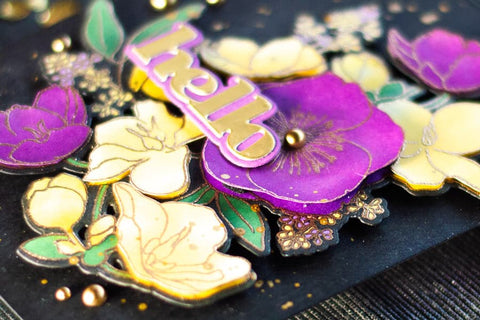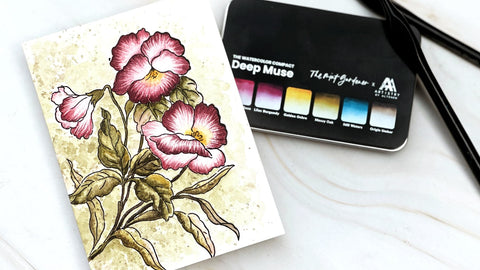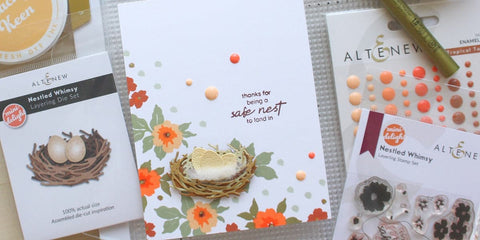A Guide to Liquid Watercolor Paints
Last Updated: September 24, 2021
Watercoloring is an excellent, fun, budget-friendly painting option
It is not one of those talent-discriminating forms of art, so pros and beginners are welcome to indulge. There is a wide range of possibilities for pleasure, creativity, and self-expression you can get from watercoloring. And if you are just starting, one of the first things you need to know is liquid watercolor paints.
What are Liquid Watercolor Paints?
Basically, liquid watercolors are liquified and concentrated watercolor paints. They are similar to inks but more transparent. You can use them at full-strength and undiluted, or you can add water depending on the color richness you desire - less water= stronger color; more water = lighter color. Many artists who want to produce vibrant and rich color use these liquid watercolors to substitute pan watercolor paints.

Some of its nice characteristics include:
- Very lightweight and small-sized - allows easy transport for frequent-traveling artists
- portability, ease of use, and clean-up - perfect for doing quick sketches and warm-up exercises
- Translucent - great for delicate and emotive painting
- Versatile - allows for creating mixed media pieces
- Quick-dry - allows for application of various techniques and effects
- Vibrant colors - depicts excitement and optimism that stands out from the background
Liquid watercolor paints come in bottles with eye droppers, which you can buy as a set or individually. These paints also last for a long time, so it’s wise to store them in a dark, dry space to keep the quality of colors. Sometimes, though, time alters the properties of some color, like yellow gets too marshy. But most of the colors stay unchanged.
They are popular in children’s classroom projects because of their vivid colors. If you are a parent or a primary school teacher who uses food coloring for kids’ creative activities, it’s better to opt for liquid watercolor paints. Not only are they more vibrant, but they are also cheaper, more convenient to use, and WASHABLE! Don’t worry, they are non-toxic and odor-free.
So, whether it’s for your kids, personal hobbies, school projects, and other painting activities as a beginner or a professional, a liquid watercoloring kit comes in handy.
How much to buy?
This is one of the most frequently asked questions among watercolorists. Choosing the first sets to buy may be truly confusing as there are too many color varieties and each with distinct characteristics. If only we could buy every color! But don’t get yourself too stressed out; here’s a useful tip to a versatile color palette with limited colors.
“You should consider objective measures, like permanence and transparency, but choosing colors ultimately comes down to personal preference.”
There's no right or wrong way of choosing colors. To start, it's always best to choose at least one of the primary colors- red, yellow, and blue. As a small child, you may have learned the basics of color mixing- red and yellow make orange, yellow and blue make green, blue and red make purple, and mixing the 3 will create brown. Playing around with the amount of color to mix together will create a myriad of different shades. Once you have the 3 primaries, you can add in colors as you go along, we know it's nice to have every color, but it's not necessary. However, you must get your supplies from a reliable manufacturer to ensure a good starter artist’s quality color set.
It’s important to note that you can create different hues by combining certain colors. So, if you’re on a tight budget, prioritize primary colors.
Again, there’s no need to get overwhelmed! Just get some paint, a little water, and start painting. It's always best practice to think about what you are painting onto; you will need to use watercolor paper. Normal smooth cardstock will not be able to handle the amount of water, so it will bubble.
Easy and Fun Liquid Watercolor Techniques

- Drip and Spritz - done by touching the end of the eyedropper onto your watercolor paper with a few different colors of the liquid watercolors.Don’t squeeze the top to avoid big drops -just little touches here and there. With a water spritz bottle, spritz it from about a foot about. Keep spritzing until you see the color start to travel. Don’t overdo it or you lose the cool veiny looking effect. Add a little heat with your heat gun.

- Soft wash - add water into your pallet, and to that water, add just a couple drops of liquid watercolor. Take your paint brush to pick up the color from your pallet. You can add more watercoloring techniques on top of it, like the drip and spritz.
- Mix and Add Shimmer - put drops of liquid watercolor into your pallet.Then, put in a tiny bit of mica powder into each of the colors. Mix them. You can paint with them as you would a regular watercolor but this way it will have shimmer to it.
Artist-grade Liquid Watercolor Supplies

Watercolor for beginners requires quality art supplies as much as professionals do. It may sound economical, but cheap materials are stashed with a hidden cost. On the other hand, manufacturers of artist-grade brands, like Altenew, meet a rigid standard for all their products - watercolor paper, brushes, pencils, and paints. Hence, their materials are easy to use and long-lasting. It may be more pricey, but you get your money’s worth in terms of permanence, intensity, and superior transparency. Remember, your tools and supplies contribute to your level of success.
You can find a huge selection of liquid watercolor paints if you check out this page. Each product comes with a color chart to guide you with color mixing and swatching.
2 comments
In This Article
More Crafty Reads & Inspirations
-

Bold Paper Piecing Hellebore Card with Dramatic Florals
-

CAS Nature-Inspired Card with Mini Delight Nestled Whimsy Set and Watercolors
-

Pansies in Watercolor with the Deep Muse Compact
-

Clean and Simple Cardmaking with the Mini Delight - Nestled Whimsy Set
-

Bring Class and Elegance to Your Projects (+With Video Tutorial)

















Hello, Bonnie! We recommend stamping the image first with pigment ink. Pigment ink is an oil-based, water-resistant ink and is great for watercoloring! <3
🌸If I use your paint and stamp flowers what ink do I use to first stamp the images? I don’t want the line to run when watercoloring.